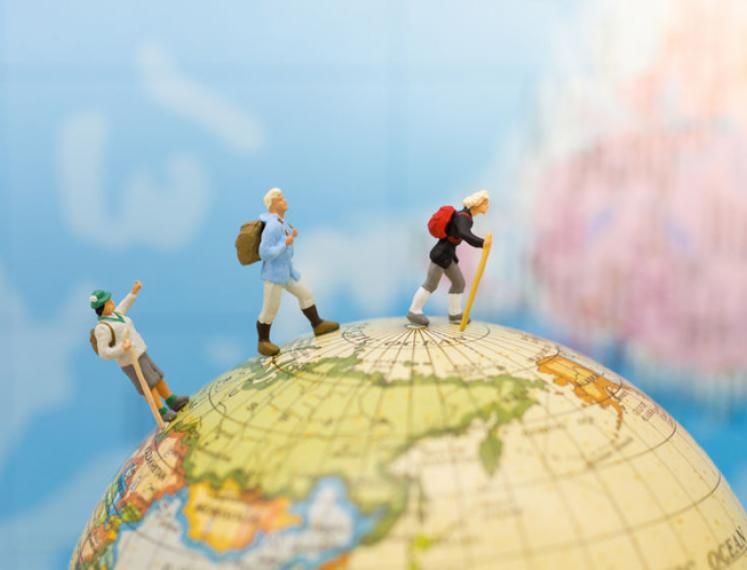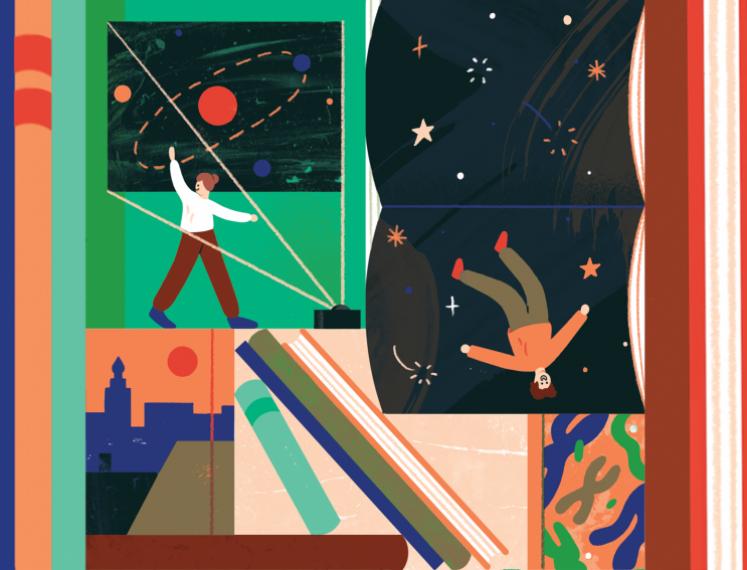
Travelling Diseases
On March 12, the Dutch government ordered the cancellation of all events with 100+ people with immediate effect. Just hours before, I received an email from Peter Frankopan announcing he would not be arriving that day, as planned, due to the new travel restrictions. Frankopan, professor of global history at Oxford University, would have given a lecture at Studium Generale Groningen that evening on his book The Silk Roads, A New History of the World. Now that all of Europe has woken to a new pandemic, Frankopan’s book suddenly seemed more relevant than ever, given that it explores (in the words of Frankopan’s publisher) “the forces that have driven the rise and fall of empires, determined the flow of ideas and goods and are now heralding a new dawn in international affairs.”
Pandemics are one of those forces that have shaped and reshaped humanity. This notion made me reflect on another speaker we had back in 2015, Johannes Krause, Director at Max Planck Institute for the Science of Human History and founder of the field of ‘ancient pathogen genomics’. He pointed out that we know a lot about pandemics, yet we know surprisingly little about the evolution of pathogens - bacteria, virussus, or other microorganisms that can cause disease. In his research, Krause reconstructs ancient pathogens and compares them to their modern counterparts to reveal how pathogens evolve and what causes major outbreaks.
Krause also explained how infectious disease increased with the rise of agriculture, for the simple reason that agriculture allowed larger numbers of people to live together and therefore created opportunities for pathogens to spread. As human populations grew and spread, so did infectious diseases, causing epidemics and eventually also pandemics.
As this timeline of historical pandemics shows, in the last 2000 years there have been at least 20 major pandemics. The context, explanation and outcomes of these pandemics are all different, yet the fundamentals remain the same; the more we travel and interact, the more vulnerable we are to infectious diseases.
The biggest and most deadly pandemic in human history has been the bubonic plague, better known as the Black Death, which travelled via the Silk Roads from Asia to Europe. Around 1347 the Black Death arrived in the Mediterranean harbors of Europe and in the next few years killed between 30-50% of all Europeans. In 2011, Krause was the first to reconstruct the genome of Yersinia Pestis, the bacterium that causes the plague, from a sample of a medieval cemetery in London. The genome turned out to be identical to today's plague pathogen, showing that the same bacterium has been around for at least 600 years. And even though modern medicine has effective measures to treat it, the plague still affects thousands of people worldwide.
Another historical perspective on pandemics comes from Norwegian biologist Nils Stenseth, who also gave a lecture at Studium Generale, in 2015, arguing that if we want to understand the plague among people, we really have to understand what goes on in the wilderness among rodents. Because the plague jumps - quite literally via fleas - from rodents to humans. Until recently it was generally assumed that after the plague was introduced into Europe, it remained among European rats, jumping over to humans every so often and causing repeated outbreaks over the next four centuries. Stenseth and his team discovered that in fact the plague returned to Europe in repeated waves from Central Asia via the Silk Roads. They traced the Black Death back to gerbils in Central Asia, which form an “environmental reservoir” for the plague to this day. Stenseth showed that climate variation influences the dynamics of the disease: an increase in temperature of just one degree could lead to a 50% increase in plague prevalence in gerbils. Historically, the climate variations in Central Asia over the last thousand years correspond with the plague outbreaks in Europe, providing evidence for repeated climate-driven reintroductions of the plague into European harbors from reservoirs in Asia.
That gerbils form a plague reservoir is not unique. Stenseth pointed out that 56 out of 60 reportable infectious diseases have an environmental reservoir, meaning it is not with humans or domestic animals, but in the environment. On top of that, most infectious diseases are zoonotic, meaning they can be transmitted from animals to people.
Now we know where the plague comes from, but back in the 14th century there was a lot of fake news. Faced with the Black Death, and reaching for explanations and/or someone to blame, people pointed to women and Jews, among others, as culprits. Frankopan describes a few examples in his book; “Avoid sex and ‘every fleshly lust with women’, urged one priest in Sweden, and for that matter also do not bathe, and avoid the south wind, at least until lunch time.” (...) Frankopan continues, “Wild rumours circulated in Germany that the disease was not natural, but the result of Jews poisoning wells and rivers. Vicious pogroms were carried out, with one account reporting how ‘all the Jews between Cologne and Austria’ were rounded up and burnt alive.” These accounts reminded me of a tweet by WHO this February: "Our greatest enemy right now is not the coronavirus itself. It's fear, rumors and stigma. And our greatest assets are facts, reason and solidarity"
I wonder how this crisis will develop and how we will look back on it in the future. What causes––and scapegoats––will carry the blame for COVID 19? Can it be traced back to an environmental reservoir? And how will this pandemic reshape our world?
Kirsten Krans, programme maker at Studium Generale Groningen.
Still curious?
- Rewatch the lectures by Johannes Krause on ancient pathogens genomics and Nils Stenseth about medieval plague pandemics in Europe
- Peter Frankopan shared an opinion on the coronavirus and its impact on international relations in The Guardian; Coronavirus has presented China with a historic opportunity — will it take it?
- On June 16 the book De reis van onze genen will be released, the Dutch translation of Johannes Krause first popular science book he wrote together with Thomas Trappe, a science journalist. You can find the Dutch version and German version at our local bookstore Van der Velde.
- Articles by Nils Stenseth and his team mentioned in this blog:
Plague dynamics are driven by climate variation
- Climate-driven introduction of the Black Death and successive plague reintroductions into Europe
- Check out our Watchlist Fighting Disease
- And last but not least keep an eye on our website or subscribe to our newsletter to receive a new date for the (rescheduled) lecture by Peter Frankopan.


